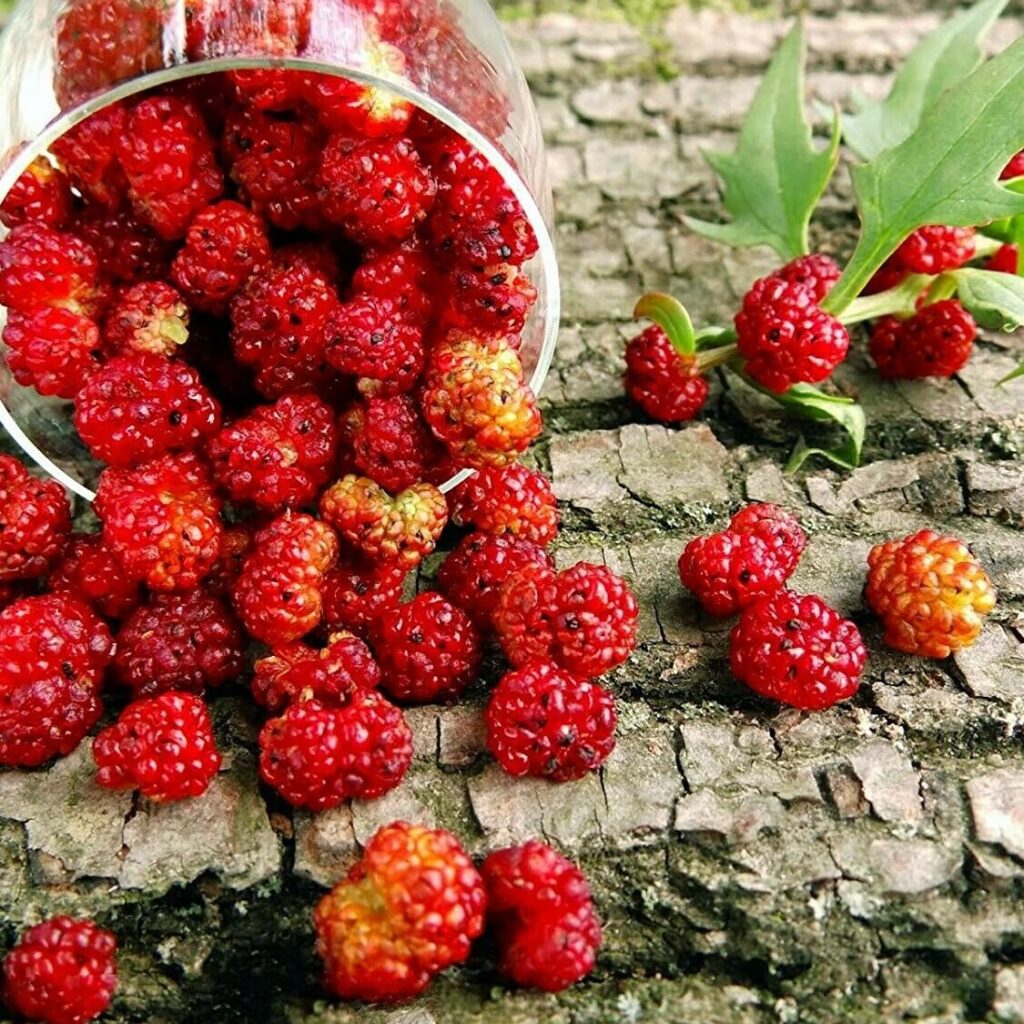
Strawberry Spinach – Easy Care Salad Green with Edible Berries
*** SEEDS ARE $4 PER 10. ADD $4 PACK POST TO THE ORDER
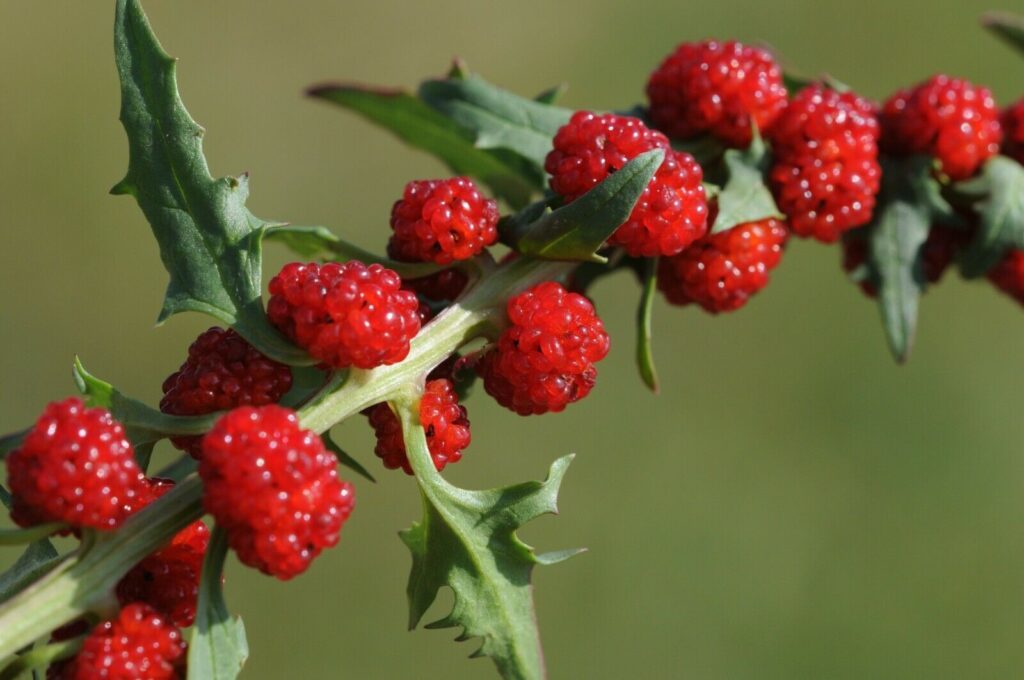
Do you enjoy trying new plants in the garden? Strawberry spinach is a fun edible that I’ve enjoyed in my garden for many years. Both the leaves and berries are edible. I usually eat the younger leaves fresh in salads, and use the older leaves for cooking. The berries are bland, but add some texture to summer salads.
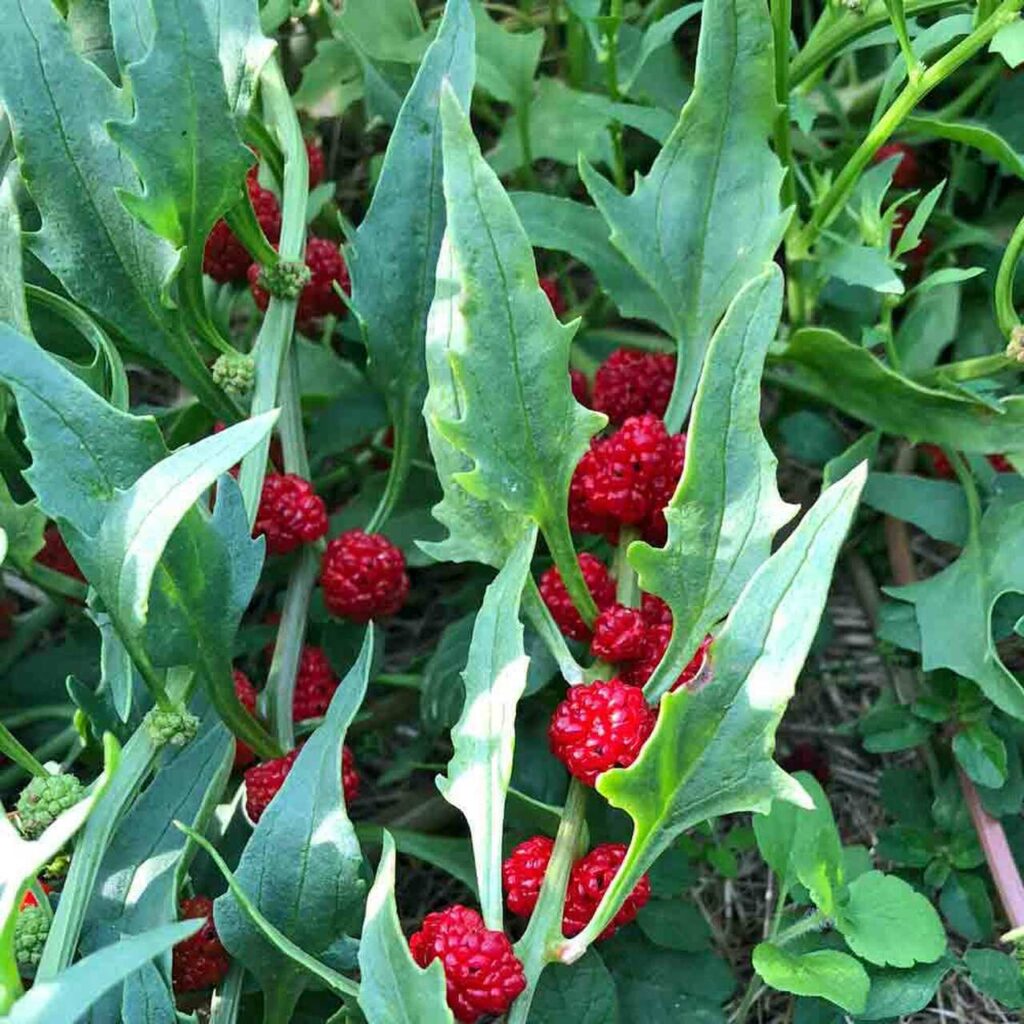
Strawberry spinach is also known as Blite Goosefoot, Strawberry Goosefoot, Strawberry Blite, Strawberry Sticks, Beet Berry, Beetroot, Indian Paint, and Indian Ink. Wikipedia says, “It is native to most of North America throughout the United States and Canada, including northern areas. It is considered to be endangered in Ohio. It is also found in parts of Europe and New Zealand.” This is interesting, since I’ve never seen it in the wild, but then again it mentions that it prefers “moist mountain valleys”, and I’ve never lived in one of those.
How do you Grow Strawberry Spinach?
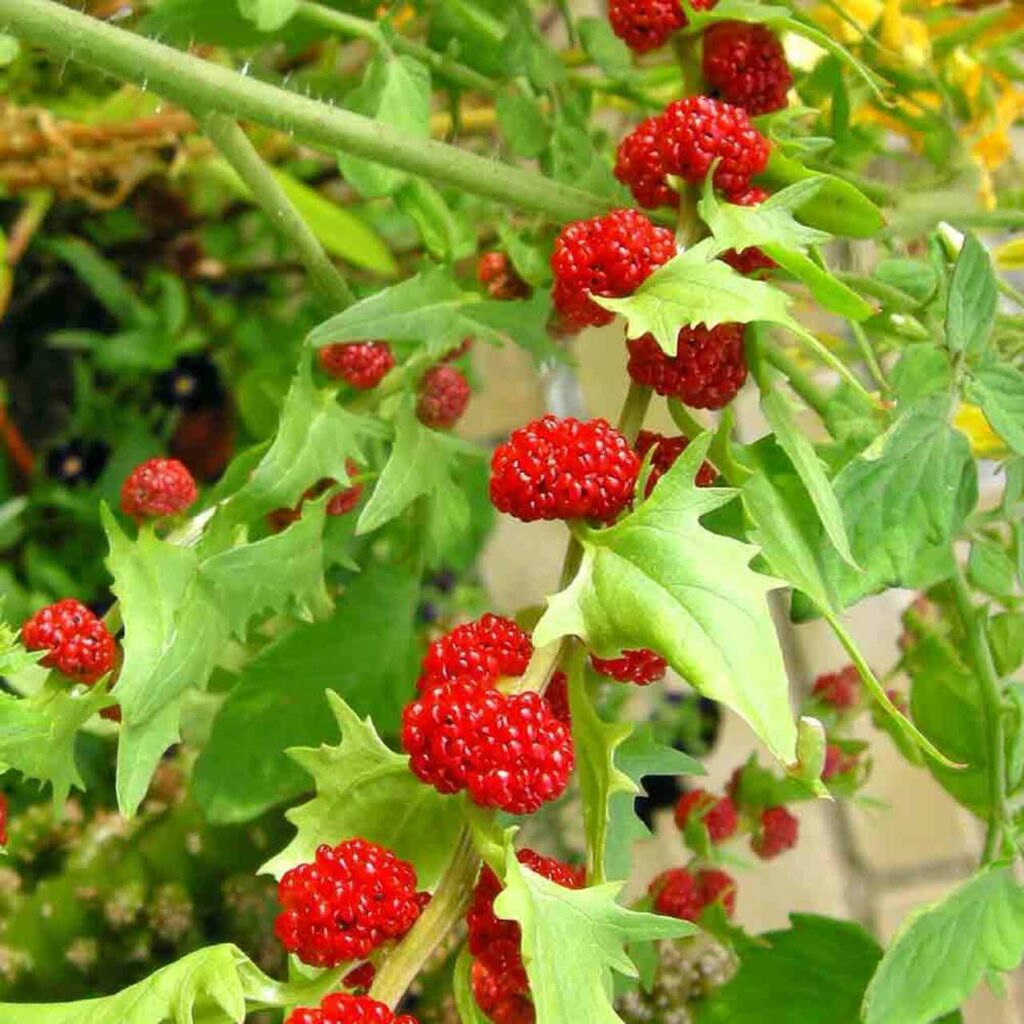
I had the best luck lightly sprinkling the seeds on the soil surface (direct seeding) and scratching them in just a bit. Some folks have mentioned that strawberry spinach resents transplanting, and since it has a tap root, this would make sense. I only planted it two years. Now it volunteers around the garden each year, and I just keep the plants that are convenient. It received mostly neutral reviews on Dave’s Garden, although one member called it “a real weed” because it readily seeds out. Me, I like free food, so I don’t mind this habit. (You could dead head if you don’t like volunteers.) Rich soil and ample water will give the best growth and plumpest berries.
What Does Strawberry Spinach Taste Like?
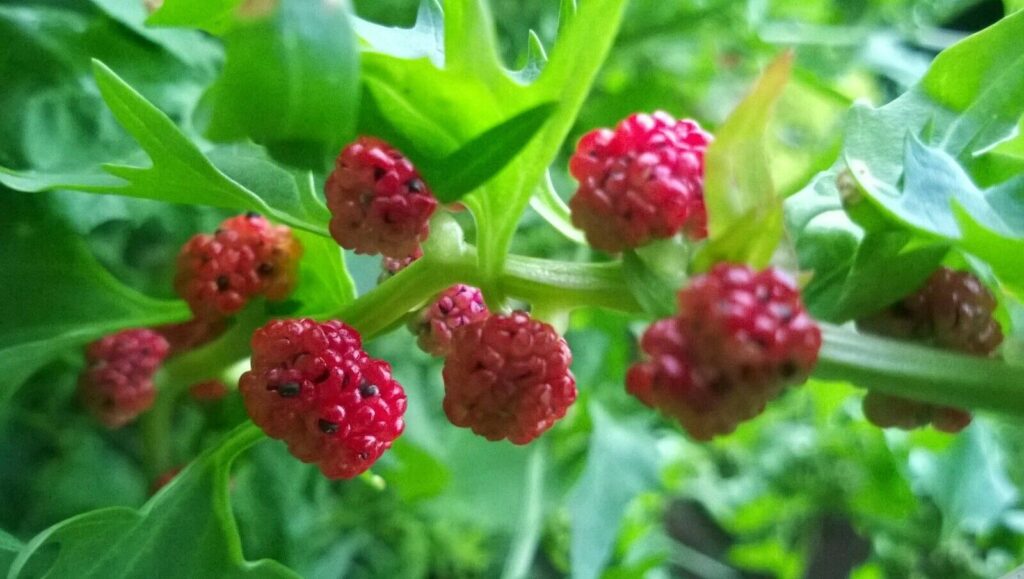
The leaves taste a lot like mild spinach. As I mentioned above, you can eat them cooked or raw. The berries are bland and mildly sweet – quite similar to mulberries – with pronounced seeds. One would not mistake them in flavor for actual strawberries. The plant is high in vitamins A and C and lutein.
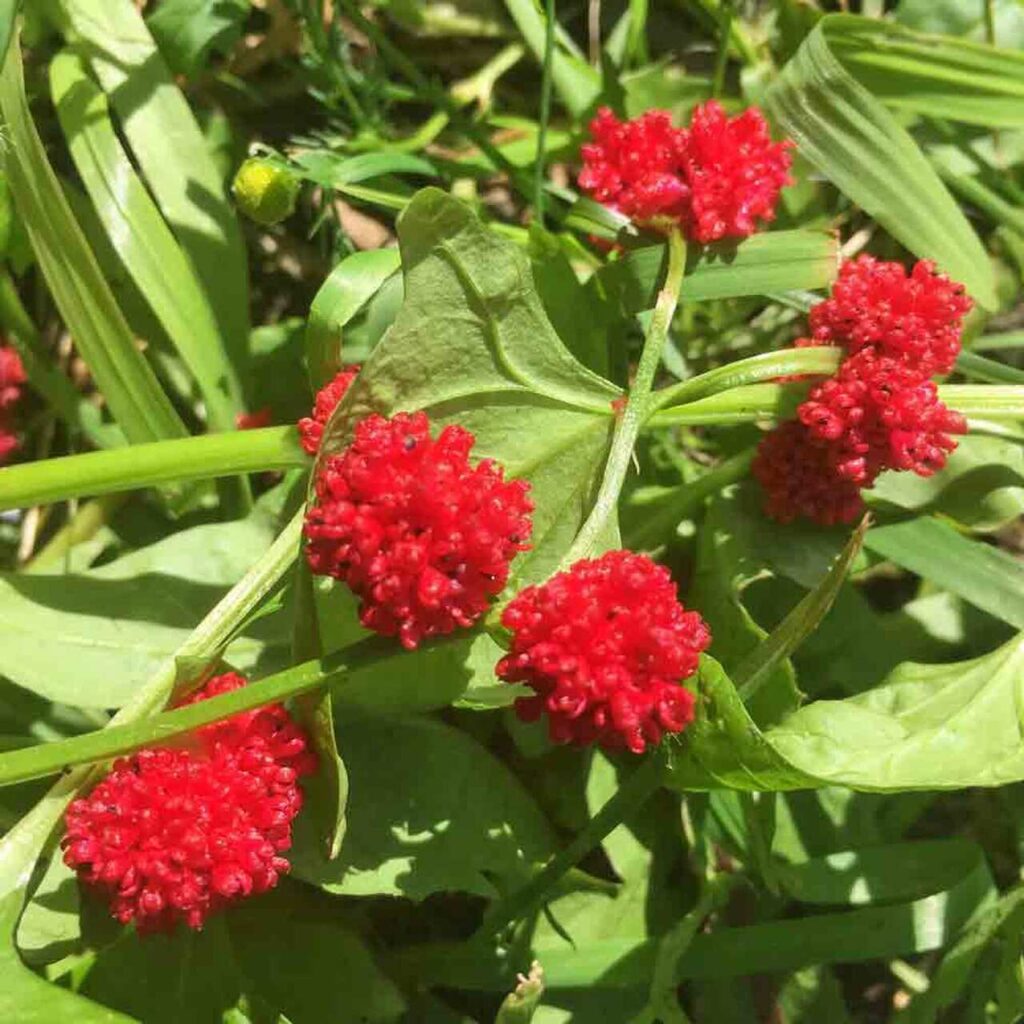
Like spinach, strawberry spinach is high in oxalates, so those who are sensitive to oxalates should avoid this plant. In moderation you should be just fine. The article “In Defense of Oxalic Acid” discusses some interesting information about oxalates I hadn’t heard before:
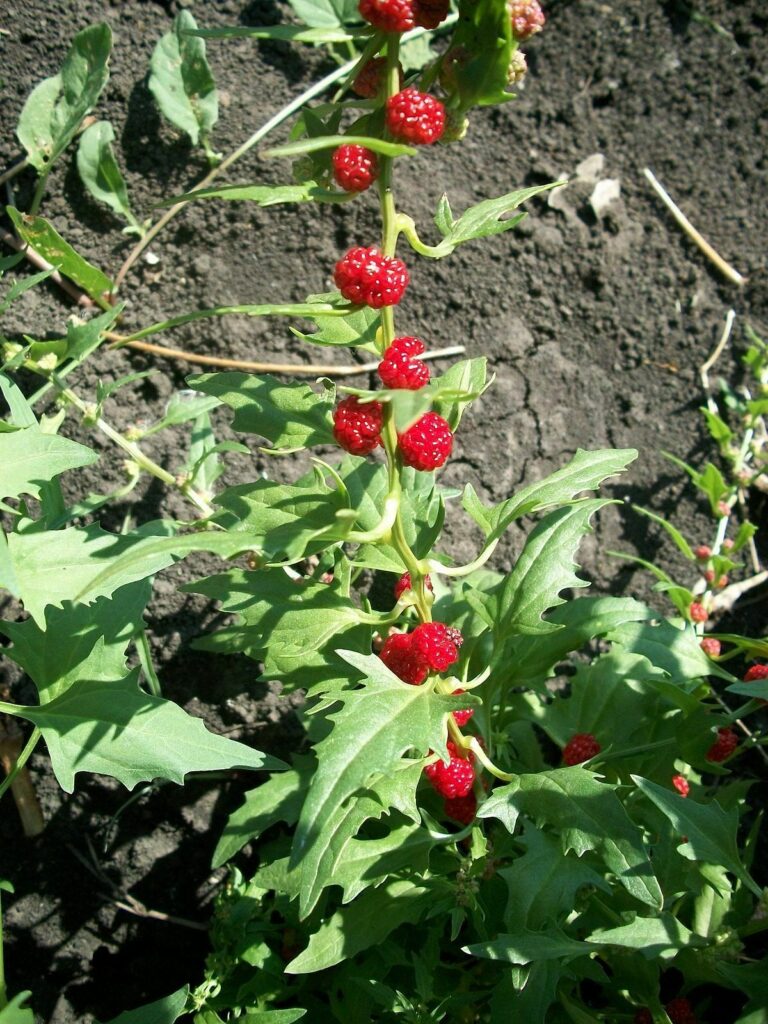
Many years ago, an enzyme (an oxidase) that breaks down oxalic acid into CO2 and H2O2 was discovered and found to be naturally present in spinach leaves. However, nitrate, which can also be present because of the use of common nitrate-based fertilizers, inactivates the enzyme.
…
Oxalic acid is even needed by our body for many functions (including peristalsis), and plays an important role in colon health, so much so that when it is not gotten through the diet, the body synthesizes it from ascorbic acid.
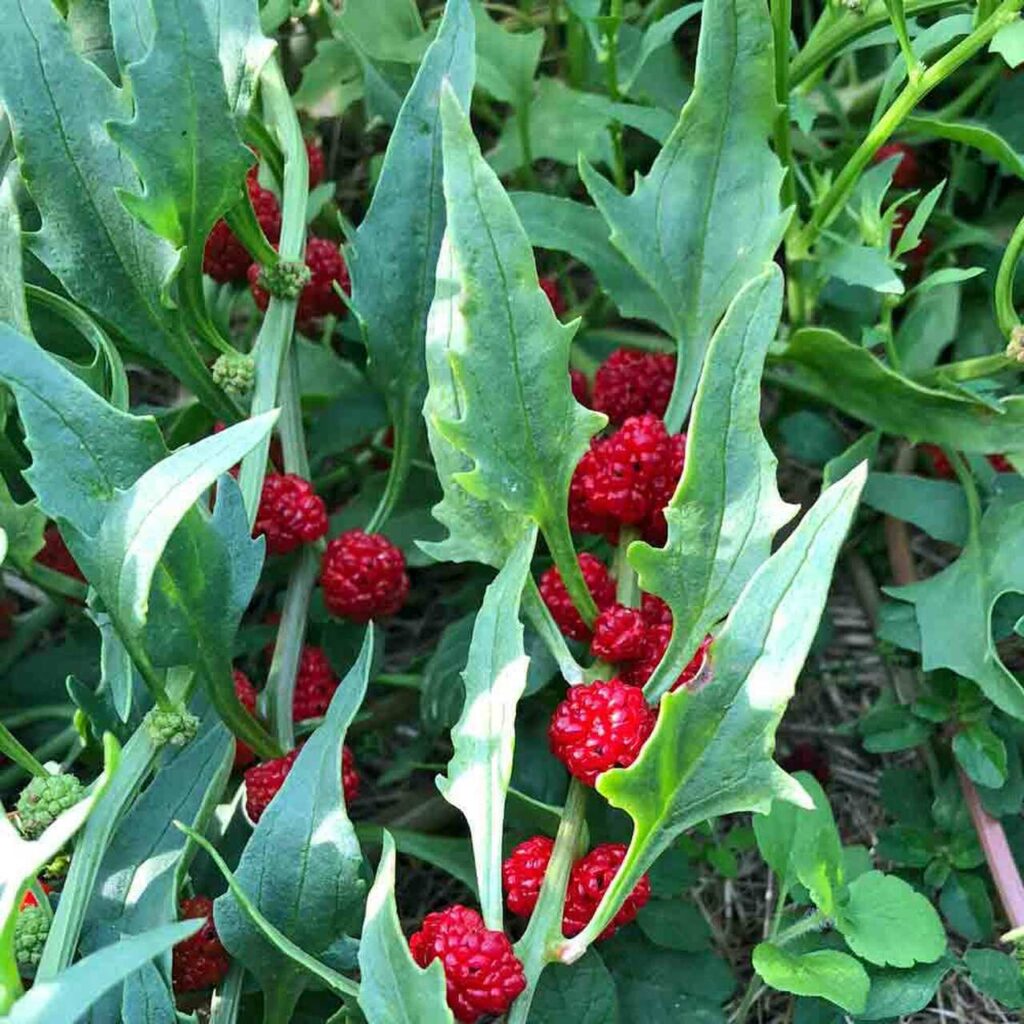
When you cook the spinach the heat crystallizes, destroying it, the acid particles making them salt atoms, then the crystallized particles you obtain called oxalate bind with other salts such as calcium and potassium and they become stones. The calcium becomes unavailable and stones are thence created. Therefore, it’s not the oxalic acid that bind with other minerals making them bio-unavailable, but oxalates that are only formed when heat destroy and then crystallize the acid particles.
The article provides a lengthy discussion of the pros and cons of oxalic acid. I encourage you to take a look, especially if you are plagued with kidney stones.
What Does Strawberry Spinach Look Like and How Big Does it Grow?
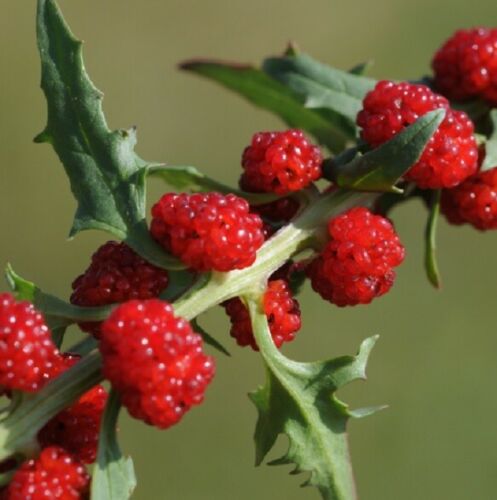
The plant is low growing, forming a rosette before shooting up flower stalks that produce the berries.
Most of mine don’t get more than a foot across and foot tall. This year in the greenhouse I had an unusually large plant, spreading about three feet in diameter and two feet tall.
Individual leaves are triangular and symmetrical, with toothed edges.
The berries appear on stems that are raised above the foliage. They start out small and green, and become larger and turn to more red as they ripen. The darkest berries will be the sweetest. You can clip an entire stem or just snag a few berries at a time – your choice.
The berries get up to about one half inch across, and the seeds add a little crunch. Some people think they’re great and some people don’t care for them at all. They raised quite a stir when I gave out samples at the farmers market a couple years ago.
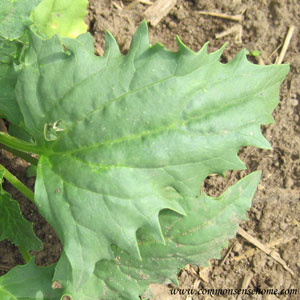
I hope you give this unusual edible a try. If your garden is anything like mine, you’ll be able to enjoy it for many years to come with little or no additional work.
SOURCED ONLINE FROM A STRAWBERRY SPINACH GROWER 4 U
Any questions or if buying, contact me HERE


![Strawberry Spinach Plant [Chenopodium Foliosum] Seeds for sale here online Australia $4 + p/p](https://sunblestproducts.com/wp-content/uploads/2021/04/strawberry-spinach-images-www.sunblestproducts.com-13-1-922x922.jpg)